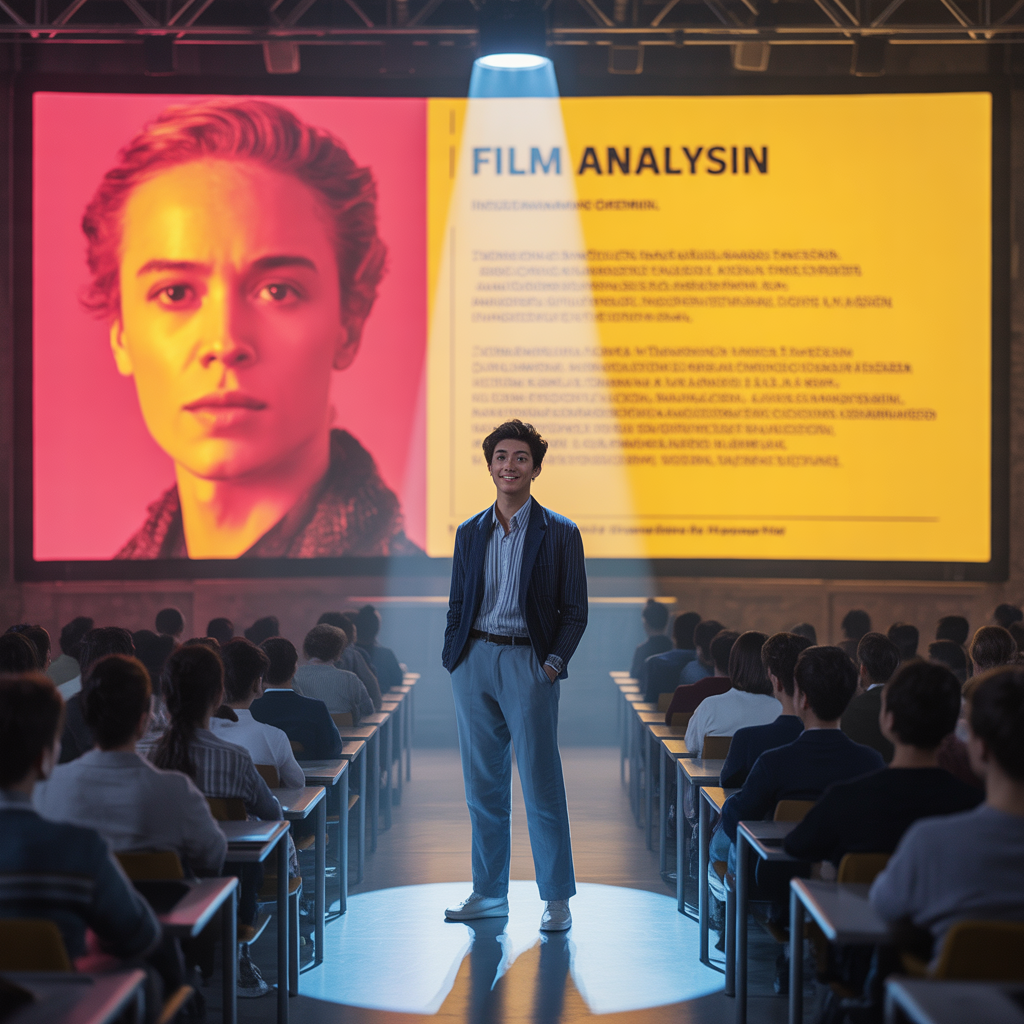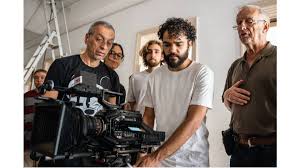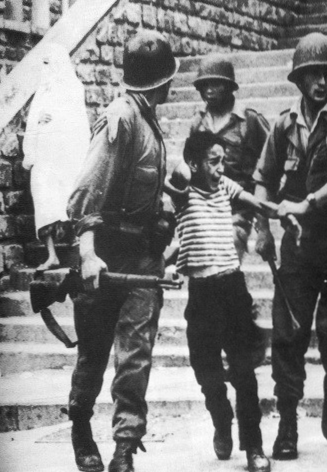Licence 3 Etudes cinématographiques
🎬 مقياس: سوسيولوجيا السينما
المستوى: السنة الثالثة ليسانس
التخصص: دراسات سينمائية
القسم: قسم الفنون
المجال: علم الاجتماع الثقافي والفني
الطبيعة: مقياس أساسي – نظري وتطبيقي
🔹 تعريف المقياس
يُعنى مقياس سوسيولوجيا السينما بدراسة العلاقة الجدلية بين السينما والمجتمع من حيث كون السينما نتاجاً ثقافياً يعكس البنى الاجتماعية والاقتصادية والسياسية، وفي الوقت ذاته أداةً فاعلة في تشكيل الوعي الجماعي وإعادة إنتاج القيم والأيديولوجيات.
يهدف المقياس إلى تمكين الطالب من قراءة الفيلم السينمائي قراءة سوسيولوجية تحليلية، من خلال فهم أبعاده الاجتماعية والثقافية، وتحليل أنماط التمثيل الاجتماعي في الخطاب السينمائي المحلي والعالمي.
🔹 أهداف المقياس
-
فهم السينما كظاهرة اجتماعية وثقافية تتقاطع فيها الفنون، القيم، الأيديولوجيا، والتاريخ.
-
تعريف الطالب بمناهج التحليل السوسيولوجي للفيلم ومفاهيم مثل الطبقة، الجندر، السلطة، الهوية، والدين في السينما.
-
تحليل العلاقة بين الإنتاج السينمائي والبنية الاجتماعية والسياسية.
-
تنمية القدرة النقدية لدى الطالب لقراءة المجتمع من خلال النص السينمائي.
-
تحضير الطلبة لمشاريع التخرج والأبحاث التطبيقية في دراسات الصورة، الثقافة، والجمهور السينمائي.
🔹 المخرجات التعليمية (Learning Outcomes)
بنهاية هذا المقياس، يكون الطالب قادراً على:
-
تفسير الظواهر الاجتماعية من خلال الأفلام السينمائية.
-
تحليل التمثيلات الطبقية والجندرية والدينية في الخطاب السينمائي.
-
تطبيق المناهج السوسيولوجية على نصوص بصرية.
-
إنتاج قراءات نقدية علمية حول علاقة السينما بالمجتمع.
-
إدماج المعارف السوسيولوجية في مشاريع التخرج أو التحليل السينمائي.
🔹 المنهجية المعتمدة في تدريس المقياس
-
محاضرات نظرية لشرح المفاهيم والمناهج السوسيولوجية.
-
تحليل أفلام مختارة بوصفها نصوصًا اجتماعية.
-
ورش تطبيقية لتحليل مشاهد وأفلام قصيرة من منظور اجتماعي.
-
عروض شفوية جماعية حول مواضيع محددة (المرأة، الطبقة، المدينة، السلطة، الدين...).
-
مقابلات واستبيانات مصغرة لتحليل تفاعل الجمهور مع أنواع معينة من الأفلام.
🔹 أهم المناهج المستخدمة في التحليل
-
المنهج التاريخي–التحليلي: دراسة تطور العلاقة بين السينما والمجتمع.
-
المنهج البنيوي–الوظيفي: تحليل وظائف السينما في المجتمع.
-
المنهج النقدي (مدرسة فرانكفورت): الكشف عن البعد الإيديولوجي في صناعة الثقافة.
-
المنهج السيميولوجي السوسيولوجي: قراءة الرموز والعلامات في الفيلم من منظور اجتماعي.
-
المنهج الميداني: دراسة الجمهور وأنماط التلقي عبر الملاحظة والاستبيان.
توصيف بيداغوجي مختصر (للدليل الجامعي)
مقياس سوسيولوجيا السينما يهدف إلى دراسة العلاقة بين السينما والمجتمع من منظور علم الاجتماع الثقافي، مع التركيز على تحليل الأبعاد الاجتماعية للأفلام والرموز البصرية. يزوّد المقياس الطلبة بالأدوات النظرية والمنهجية اللازمة لتحليل الخطاب السينمائي بوصفه مرآة للتغير الاجتماعي، ويؤهلهم لتطبيق التحليل السوسيولوجي في أبحاثهم ومشاريعهم الفنية.
✅ قائمة المراجع (وفق نظام APA 7th)
Biltereyst, D., Meers, P., & Maltby, R. (Eds.). (2019). The Routledge Companion to New Cinema History. Routledge.
→ دليل حديث في سوسيولوجيا التاريخ السينمائي والجمهور.Dyer, R. (1979). Stars. British Film Institute.
→ دراسة تأسيسية في سوسيولوجيا النجومية والإيديولوجيا.Elsaesser, T. (2005). European Cinema: Face to Face with Hollywood. Amsterdam University Press.
→ تحليل للعلاقات الاجتماعية-الثقافية في السينما الأوروبية.Kracauer, S. (1960). Theory of Film: The Redemption of Physical Reality. Oxford University Press.
→ من أوائل المؤلفات المؤسسة لسوسيولوجيا السينما.Morin, E. (1956). Le cinéma ou l’homme imaginaire : Essai d’anthropologie sociologique. Éditions de Minuit.
→ تحليل كلاسيكي للعلاقة بين الصورة والخيال الجمعي.Shrum, W. (1996). Fringe and Fortune: The Role of Critics in High and Popular Art. Princeton University Press.
→ دراسة اجتماعية لدور النقاد ضمن الحقل الثقافي الفني.Sorlin, P. (1977). Sociologie du cinéma : Ouverture pour l’histoire de demain. Aubier Montagne.
→ مرجع فرنسي رائد في دراسة البنية الاجتماعية للفيلم.Sutherland, J.-A., & Feltey, K. M. (2012). Cinematic Sociology: Social Life in Film (2nd ed.). SAGE Publications.
→ مرجع أكاديمي معاصر يجمع النظرية بالتطبيق.Turner, G. (1999 [orig. 1988]). Film as Social Practice. Routledge.
→ تحليل للفيلم بوصفه ممارسة اجتماعية وثقافية.
-

- Enseignant: سنوسية باحفيظ
This course focus on real-time translation techniques , inculding simulatneous and consectutive interpretation . students will develop congnitive processing skills to translate spoken language quickly and accuratley . key topics include cultural adaption technological tools and managing fast speech .

- Enseignant: Amira Harbit
معلومات عامة حول مقياس سيكولوجيا السينما (محاضرة/ عن بعد)، للسنة الدراسية 2025/2024، السداسي السادس
موجه لطلبة سنة ثالثة 3 ليسانس تخصص الدراسات السينمائية.
الأستاذة: ح.مكي
البريد الإلكتروني (للتواصل): mekkihizia@gmail.com
طريقة التقييم: يعتمد المقياس أساسا على حصة محاضرة لا غير، وبالتالي فإن طريقة التقييم ستكون عن طريق الامتحان النظري، دون نقطة أعمال موجهة، لذا على الطلبة الانتباه والحرص على الدروس التي ستدرج دوريا بشكل أسبوعي في المقرر، لأنه

- Enseignant: HIZIA MEKKI
- Enseignant: Amira Harbit
- Enseignant: Amira Harbit
.Duration: 30 minutes.
- Resit Exam for Absent Students and Non-Completers .
- Enseignant: Amira Harbit
Date: Wednesday, 15 January .
Time: Begins at 16:30 .
Duration: 45 minutes
- Enseignant: Amira Harbit
- Enseignant: Amira Harbit
- Enseignant: Amira Harbit
- Enseignant: Amira Harbit
- Enseignant: Amira Harbit
محاضرات التشريعات الفنية في الجزائر
المقياس : التشريعات الفنية في الجزائر
التخصص : سنة ثانية فنون تشكيلية
أستاذة المقياس : بوعلام سعدية
السنة الجامعية : 2024 -2025
كل المحاضرات كاملة تجدونها في ملف واحد
- Enseignant: Saadia Boualem
This quiz is important and must be finished on time. It will check your understanding of key ideas. Be ready, as your results will affect your grade .
- Enseignant: Amira Harbit
This quiz will test your understanding of the key concepts covered in our Introduction to Cinema course . good luck
- Enseignant: Amira Harbit
This course is about translating dialogue in films to another language. It focuses on making sure the translation sounds natural and keeps the same feeling and meaning .

- Enseignant: Amira Harbit
in this course , we talked about the basics of subtitling, which is adding text to movies and videos to show what characters are saying. We focused on three main points: condensation (making the text shorter but meaningful), timing (matching the subtitles with when characters speak), and synchronization (making sure the text fits with the speech and actions on screen). These basics help create subtitles that are clear and easy for viewers to understand .

- Enseignant: Amira Harbit
Academic Year: 2024-2025
Teacher: Ms.HARBIT AMIRA
Subject: Translation
This course is designed for L3 Students Students at the department of Arts
Faculty of Letters and Arts

- Enseignant: Amira Harbit

- Enseignant: مليكة عثمان
